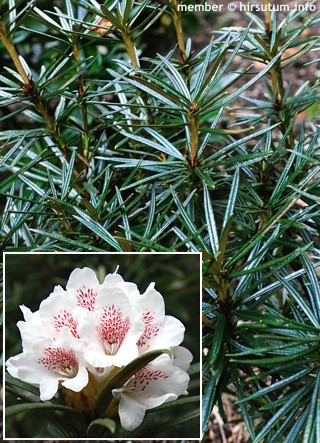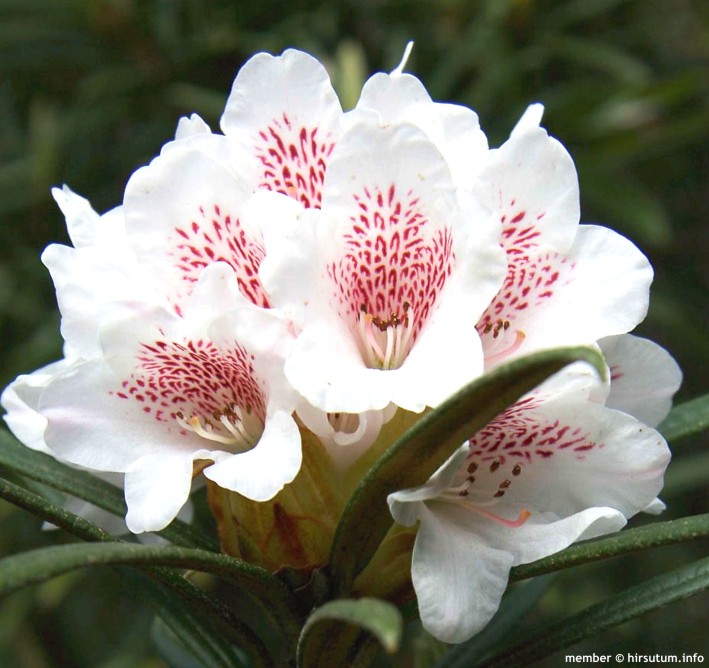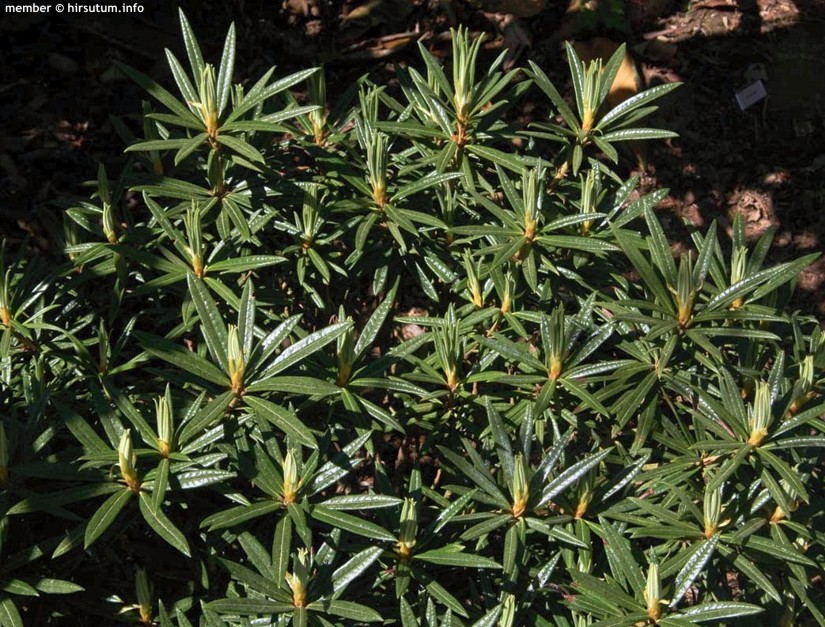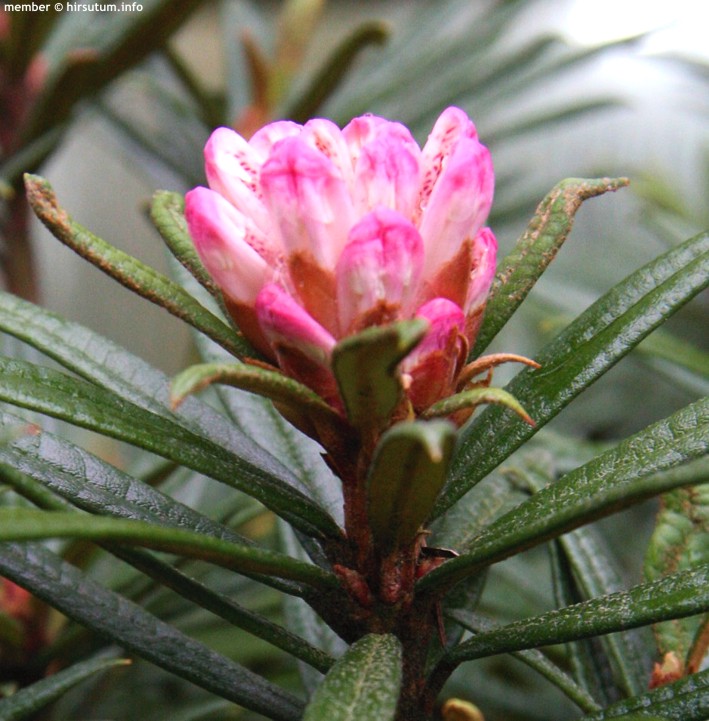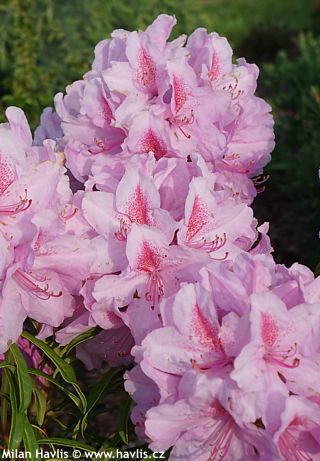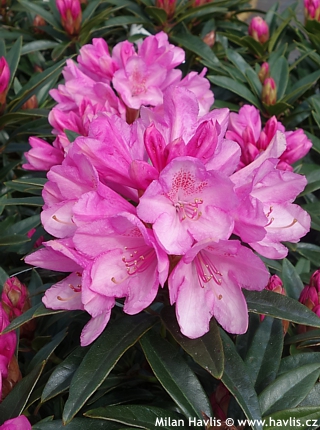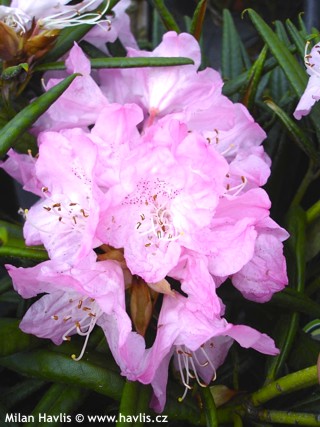Rhododendron roxieanum var. oreonastes rhododendron
Rhododendron
Rhododendrons are reliable, beautifully flowering, evergreen shrubs of variable origin: S.W. China, Himalayas, Northern America, and even Europe. The original species were hybridized several times for better performance so in the 1950´s there were more than 10,000 cultivars registered, and the number keeps increasing.
This rhododendron is so handsome! From Tibet-Yunnan border in China comes a plant that was first described in 1915, and has been cultivated by collectors and rhodo lovers all over the world. Just one look at its extraordinary leaves makes you want it. They are narrowly linear, needle-like, as an imitation of Japanese umbrella pine leaves, very dark green, glossy, and covered with suede-like, light brown indumentum on the reverse.
Flowers are broadly campanulate, almost white with soft pink hues as they open from rich pink buds. Inside they are decorated with pretty red dots. They come out in late May. Blooming is quite shy - number of flowers is not large and plants may not bloom every year. Yet it is such a jewel you must love it. It forms a dense, moderately growing shrub almost 2m tall and wide in maturity.
Grow this type in full sun or partial shade, just make sure it is always well mulched. The roots are shallow, spreading to sides in search for nutrients. Never plant them too deep. The soil has to be acidic (pH 4.5-5.5), rich in humus, cool and always moist. Ideal soil mixture is peat with lime-free, light garden soil topped with leave-mould. Its bottom hardiness has not been discovered yet. After a century of cultivation all around the world it is recommended to warmer parts of zone 6 and up, however, it may take a few degrees lower so you can be the first to trial that.
Last update 18-01-2018

































